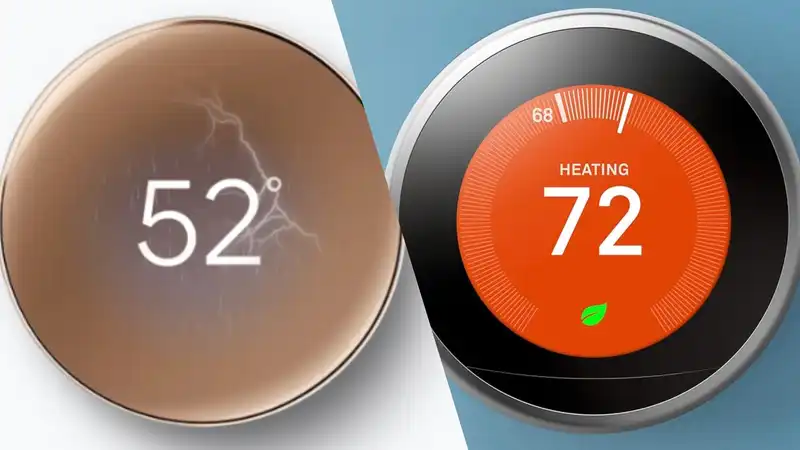Google is finally releasing the new Nest Learning Thermostat (4th generation), nine years after the release of the previous model The 3rd generation model has remained a major force as one of the best smart thermostats thanks to its classy design and adaptive learning It automatically keeps the temperature at a comfortable level while you are home and sets it to an energy-saving level when you are away
So what can Google's latest Nest Learning Thermostat do in addition to the formula to finally justify the new model? Between the gorgeous animations and bezel-free large screen with advanced AI features, the new Nest Learning Thermostat is a major upgrade from the past But at nearly $300, should you give up your existing Nest Learning Thermostat (or buy the previous generation at a steep discount)? Read on to see a breakdown of the cost and new features to determine if the new Nest Learning Thermostat is right for your home
Google's new Nest Learning Thermostat (4th generation) will cost $27999 when it goes on sale on August 20 That's $30 more than the $24999 for the 3rd generation model However, this new thermostat is bundled with a Nest temperature sensor This device allows the user to set a target temperature for a specific room rather than relying on the main sensor built into the thermostat itself It is also available in more finishes, including polished silver, polished obsidian, and polished gold
Older Nest Learning Thermostats (3rd generation) are limited to a basic black or white design Nevertheless, the previous generation Nest is currently available for as low as $169
The first generation Nest Learning Thermostat set the standard for all smart thermostats It has a modern rounded shape and compact digital display that serves as an intelligent yet elegant home fixture The rotary dial, flat panel, and convenient app controls still hold up today, but they are starting to look old
The new Nest Learning Thermostat has a larger, rounded 27" LCD domed glass screen that juts out The bezel-less design not only looks sleeker, but also provides 60% more viewing space to display information from more angles 600x600 pixel resolution displays sharp text along with new weather animations that mimic outdoor conditions such as rain, lightning, and snowfall The 600x600 pixel resolution displays sharp text along with new weather animations that mimic outdoor conditions such as rain, lightning, and snow When viewed from the side, they look like mushrooms
Both versions allow the user to adjust the temperature and turn the dial by rotating the stainless steel bangle that surrounds the thermostat
The new 12-terminal backplate greatly extends the compatibility of the fourth-generation thermostat to work with most HVAC systems, but Google says the third-generation model works with 95% of all systems
The original Nest Learning thermostat (3rd generation) focuses on keeping you comfortable while you are home and automatically switches to an energy efficient temperature when you are away The 4th generation model has a more enhanced AI feature that makes fine adjustments on the fly They are also more aware, monitoring conditions both inside and outside the home and adjusting HVAC system settings accordingly
Smart Scheduling Google's newest thermostats learn about changes in behavior based on detected movement in the house, such as the temperature you often choose or coming home early on certain days, and automatically adjust the temperature schedule accordingly Energy-saving suggestions can be implemented automatically or approved or rejected by the Google Home app for complete control
Outdoor Monitoring The Nest thermostat (4th generation) is smart enough to analyze how outdoor weather affects indoor temperatures For example, on a sunny winter day, it can pause the heating to allow the house to warm up on its own If humidity is high, it can predict that the indoor temperature will be higher and adjust accordingly
System Health Monitor This feature tracks HVAC performance over time The new thermostat can sense problems, such as the inability to cool or warm a space in a reasonable amount of time, and send recommendations or emergency alerts for problems that require immediate attention
Dynamic Farsight
The new Nest Learning Thermostat's Dynamic Farsight allows you to customize your home screen with actionable information, making it easy to view time, temperature, weather and outdoor air quality This view changes when viewed from close up and expands when viewed from further away, allowing users to see information at a glance, even from across the room In addition, the new Nest also features animated weather forecasts
Smart Ventilation The system brings in fresh air when the outside air is healthy and automatically turns off ventilation when pollutants are detected This is useful for homes in areas prone to wildfires or near urban areas
The Google Home app provides a similar experience with new and old thermostats, but the latest Nest Learning Thermostat can also be controlled from other smart home apps with built-in support for Matter, the new thermostat Connect with Matter-compatible smart home platforms such as Alexa and HomeKit The ability to control and automate Google products from anywhere is a major differentiator, opening the door to more possibilities and even more device interaction
Both versions of the Nest Learning Thermostat are stylish and help you save money by automating climate control But should you upgrade to a newer model or stick with the older version?
If you're only invested in the Google Home ecosystem and just want a thermostat that automatically adjusts when you come home or leave the house, the older, third-generation Nest is available at a discounted price of $169 If budget is your biggest concern, stick with this model
If you want a sexy gadget with the latest features, $279 is worth the splurge A more context-aware smart thermostat that can sense and account for more subtle changes, the ability to control it from other smart home platforms, and a more personalized screen bring the experience more in line with your wall smart display While the initial cost is high, these major improvements will make the thermostat usable for years to come










Comments